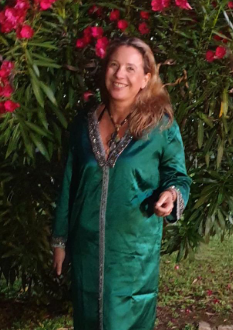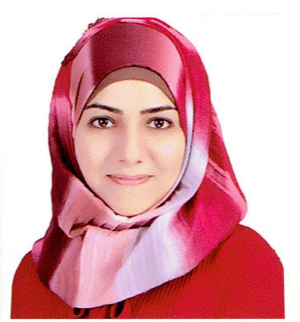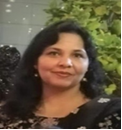Day 1 :
Keynote Forum
Alberto Cliquet
faculty of Medical Sciences- UNICAMP, Campinas,
Keynote: A Comprehensive Approach to improving Neuroplasticity and Clinical Outcomes in Chronic Spinal Cord Injured Individuals
Time : 9:15 -9:45

Biography:
PhD Bioengineering (Univ. Strathclyde / Glasgow). Fellow, The Royal Society of Medicine (London, UK). (Full) Professor, Dept. Orthopedics, Rheumatology & Traumatology, Fae. Medical
Sciences - UNICAMP. Coordinator, Spina,l Cord Injured Outpatient (University Hospital),
Coordinator PostGraduate Course in Surgical Sciences. Also (Full) Professor at Universidade de Sao Paulo - USP. Successfully supervised over 100 undergraduate students, residents in Orthopedics , 90 Doctoral and MSc. theses, post-docs. Examined MScs/PhDs and full professorships in Brazil, UK, USA, Australia. Invited Presenter (Leipzig, ISPO 2010), Keynote Speaker (Rome, Biostec 2011), Invited Lecturer (Graz, 2013 FES Wien Workshop), Programme Chair (Angers, Biodevices2014), (Lisbon, Biodevices 2015), (Funchal, Biodevices 2018), being the President for the Amrnal IFESS Conference (Sao Paulo, 2011). Currently coordinating FAPESP-Sao Paulo/NWO Amsterdam ( 700,000.00 Euros). Google Scholar Hfactor=29,I10=63.
Abstract:
The work presented here reflects a 2-fold based integrative protocol: (i) upper and lowe r limb movement restoration through repetitive tasks generated by neuromuscular electrical stimulation-NMES based systems; (ii) technological innovations towards diagnostics, such as autonomic dysreflexia and spasticity , with clinical outcomes yielded by therapies involving comorbidities related to paraplegia and tetraplegia.
Keynote Forum
Rosanna Chifari
Bicocca University Milano
Keynote: neurological effects of Long therapy: ivermectin as effective therapy
Time : 9:45 - 10:15

Biography:
Dr. R.Chifari
MD,Phd .
Neurologist
Bicocca University Milano
Scientific director of Ippoocrateorg.org
Abstract:
Increasing report of persistent and disabling symptoms after recovery from acute COVID -19 have been reported and that have termed as “ Long COVID “ and it occur in 10% to 30% of cases .
On neurological point of view patients describe memory impairment abs concentration , described as “ brain fog “ and is highly suggestive of chronic fatigue syndrome. Although a specific treatment is not yet validated to treat Long COVID syndrome , we reported our experience with ivermectin in such patients.
We treated 50 patients with 0,2 mg /kg to 0,4 mg/kg for 3 to 7 days according symptomatic expression ( mild to moderate ). We found a resolution in 85% of the patients treated with Ivermectin.
Our experience suggest that ivermectin could be a gold standard treatment in long COVID neurological symptoms .
Further studies are needed to confirm this data .
Keynote Forum
Dr. Sawsan Albaazi
Atheer AlSakooni Neuroscience Center - Najaf (Iraq)
Keynote: Split foot sign in Amyotrophic lateral sclerosis (ALS)
Time : 10:15-10:45

Biography:
Sawsan Albaazi 1 Middle Euphrates Center Of Neurosciences - Najaf (Iraq) Atheer AlSakooni Neuroscience Center
Abstract:
Objectives To evaluate the pattern of the extensor digitorum brevis (EDB), the abductor hallucis (AH) muscles’ involvement in ALS and Abductor digiti minimi (ADM) looking for the possibility of having split foot sign like split hand one. Background: The muscle patterns involved in amyotrophic lateral sclerosis (ALS) remains controversial. split leg and split hand signs were assessed previously. However; foot muscles involvement could be not equal in ALS like in case of split hand sign with preference for lateral hand muscles. Methods: We recruited 11 patients with ALS and 12 healthy controls. Compound Muscle Action Potentials (CMAPs) were recorded over the EDB, ADM and AH muscles in all subjects. EDB/AH and ADM/AH ratios were obtained and compared between patients and controls. Results: The EDB/AH and ADM/AH CMAP amplitude ratio were significantly reduced in patients with ALS (0.26 +_ 0.16, P = 0.001) and (0.27 +_ 0.10, p = 0.001) respectively. These findings indicate a greater loss of lower motor neurons innervating the EDB and ADM and dysfunction of spinal motor neurons innervating these muscles. The EDB/AH and ADM/AH CMAP ratios reliably differentiated patients from HCs, with AUCs of 0.42 (95% CI 0.00-0.9) and 0.41 (95% CI 0.00–0.95), sensitivities of 78%, and specificities of 100% for both with cut-off ratios of 0.12 and 0.15 recpectively. Conclusions: These results suggest preferential EDB and ADM compared to AH involvement in ALS. The EDB/AH and ADM/AH CMAP ratios robustly differentiated patients with ALS from HCs, which might facilitate an earlier identification of ALS patients.
Keynote Forum
Dr. Nighat Tahir
SINDH INSTITUTE OF PHYSICAL MEDICINE AND REHABLITATION
Keynote: Impact of Modified Game Based Activities in Motor Control and Functional Outcome of Stroke Patients
Time : 11:00-11:30

Biography:
This study was conducted at Sindh Institute of physical medicine and rehabilitation DOW University of health sciences. 15 patients those included were diagnosed as stroke through randomized control trial; patients having muscle grade 3, aged between 20-50, acute cases were included .All patients received conventional therapy and additional game based activities 4 days a week. Sports based therapy included Basket Ball, Balloon Bounce, Volley Ball, Cricket, and Football .These 5 activities covered with warm up and cool down exercises. Pre and post assessment is done by Fugal Mayer and Chadock scale.
Abstract:
BACKGROUND: Stroke is one of the most common causes of physical disability, and early, intensive, and repetitive rehabilitation exercises are crucial to the recovery of stroke survivors. Thus, to motivate stroke survivors to engage in monotonous rehabilitation is a significant issue in the therapy process. Game-based rehabilitation systems have the potential to encourage patients continuing rehabilitation exercises
OBJECTIVE: The purpose of this study was to evaluate the effect of modified game based activity that improve, motor performance in stroke survivors and increased automatic learning pattern to enhance motor control.
Keynote Forum
Dr. Melchor Rodrigo
Professor of Neurology, Buenos Aires
Keynote: The “alternative†treatments for cognitive decline, more than enough evidence to get them in the menu when facing these disorders
Time : 11:30-11:50

Biography:
I reviewed 15 patients with cognitive decline caused by different factors. They all had a Mini Mental test between 24 and 10 points (meaning mild to moderate decline in cognitive functions).
Without making any important changes on their regular medications (memantine, donepezil, etc), I started supplementing them with 50mg of phosphatidylserine (the building blocks of neuronal membranes), 10 mg of vinpocetine (known to increase cerebral blood flow) 1 gram of omega 3`s (with both EPA and DHA), liposomal b12 with folate, magnesium l-threonate (the variant of magnesium which has a stronger impact on the CNS), 25 mg of quelated zinc (involved in cell division, DNA synthesis, etc), liposomal curcumin (from the ayurvedic medicine, the gold from India, known to actually brake Beta amyloid plaques) and 40mg of ginkgo biloba
Abstract:
Abstract, Introduction:
As life span has increased thanks to science, a problem has grown with it; cognitive deteriorations caused by a number of things, mainly age.
Conventional treatments have shown little efficacy against them. Although usefull, none of them have shown a strong, efficient effect in slowing the progression of these disorders.
Allopathic medicine is and should remain the main treatment, but I truly believe it`s time to start taking many of the so called alternative treatments more seriously. The amount of evidence, if you really want to accept it, is overwhelming.
Purpose:
To review the evidence and still incredible properties of natural compounds, especially when used in combination with regular medications in cognitive disorders.
